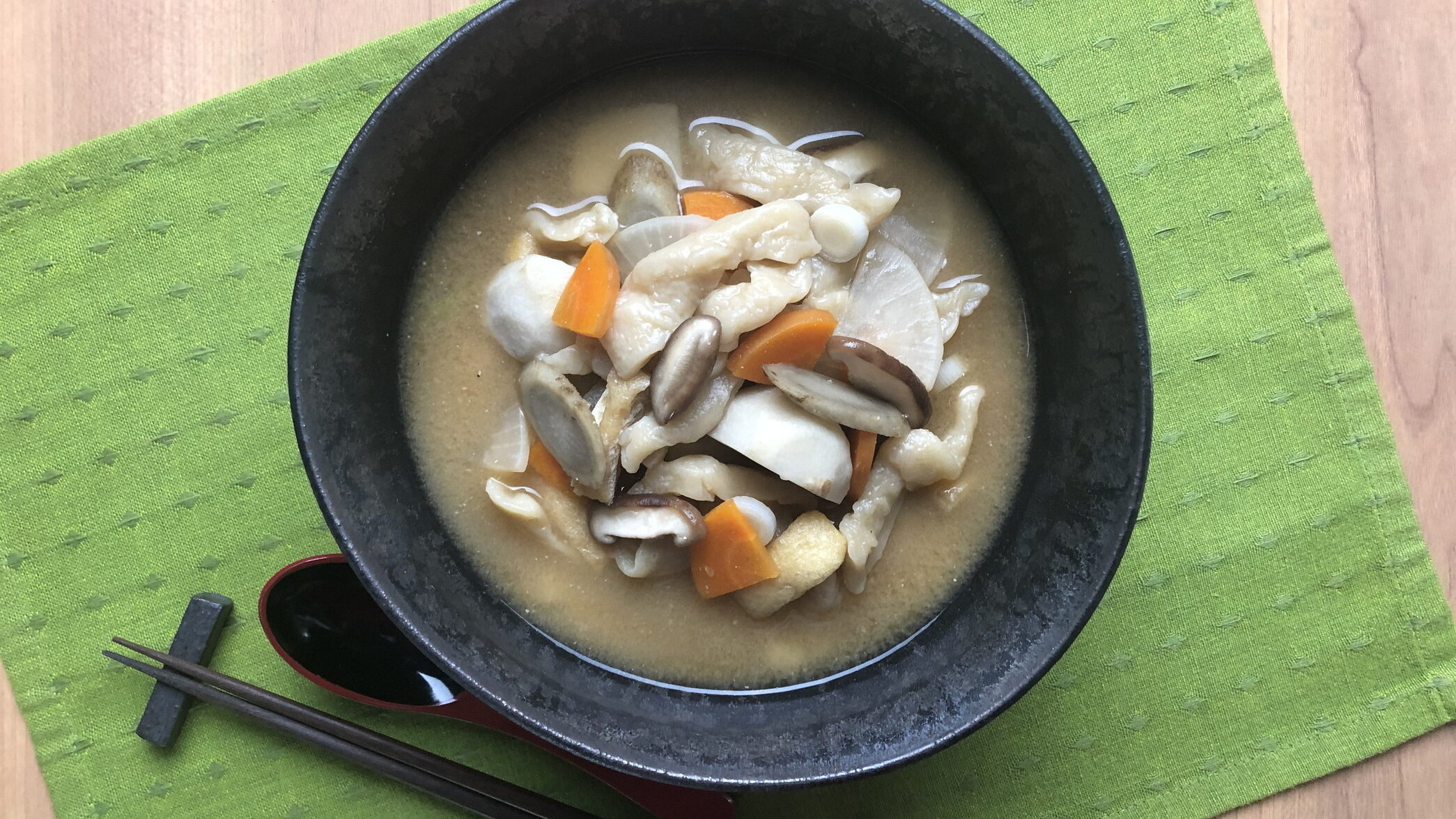
Get ready for Okirikomi (also known as Okkirikomi), a quintessential noodle dish from Gunma Prefecture. In Gunma, which is known for its high-quality wheat production thanks to its well-drained fields and the dry, cold winter winds, flour-based foods are a big part of the local culinary culture. Okirikomi is a prime example – wide, flat noodles cooked in a pot with a variety of local vegetables and mushrooms. The name “Okirikomi” is said to come from the way the dough is rolled around a stick and then “cut in” (kiri-komu) with a knife.
Dish Name: Okirikomi / Okkirikomi
- Region / Location: Gunma Prefecture
- Primary Area of Tradition: Entire Gunma Prefecture
- Main Ingredients: Wheat flour, vegetables such as carrots, long onions (negi), and shiitake mushrooms
How It’s Eaten / Served
Okirikomi is made by taking unsalted, wide, flat wheat noodles and cooking them directly in a large pot with various vegetables. The types of vegetables used can vary from household to household, but common ones include carrots, long onions, daikon radish, shiitake mushrooms, potatoes, and taro. Seasonal ingredients are often added to enjoy the flavors of the moment.
Cultural Background and Preservation
It’s believed that Okirikomi became a popular everyday staple around the mid-Edo period when stone mills became more common among the general public. While the use of wide noodles and vegetables is consistent, the specific thickness of the noodles, the types of vegetables, and even the seasoning can differ from family to family. Interestingly, Gunma is one of the few regions in Japan where it’s common to eat unsalted, un-parboiled noodles in everyday dishes like Okirikomi, with other such areas being Saitama, Yamanashi, and Nagano. In 2014, “Gunma’s Flour Food Culture – Okirikomi” was recognized as an Intangible Folk Cultural Property that requires measures for record creation and preservation by Gunma Prefecture. To ensure that the younger generations learn about this local favorite, cooking classes on how to make Okirikomi are held as part of the “Genki Gunma 21 Cooking Workshop.” Additionally, there’s a “Gunma Okirikomi Stamp Rally” that encourages people to visit restaurants serving the dish, and information is shared on the “Gunma Okirikomi Facebook” page to raise awareness and promote its inheritance.
Additional information:
- Wheat flour (小麦粉 – komugiko): The basic ingredient for making the noodles. Gunma is a significant producer of high-quality wheat flour.
- Negi (長ねぎ): Long green onions, a common vegetable in Japanese cuisine, adding a mild onion flavor.
- Shiitake mushrooms (しいたけ): A popular type of edible mushroom in Japan, known for its rich, umami flavor.
- Daikon radish (大根): A large white radish with a mild to slightly peppery flavor, often used in Japanese cooking.
- Taro (里芋 – satoimo): A starchy root vegetable with a slightly nutty flavor and a slippery texture when cooked.
- Edo period (江戸時代): A major period in Japanese history, lasting from 1603 to 1868.
- Intangible Folk Cultural Property (無形の民俗文化財 – mukei no minzoku bunkazai): Aspects of traditional folk culture that have no tangible form, such as performing arts, customs, and traditional skills.
The information about regional cuisine featured on this website (Piggy's Grandma of Japan) is summarized and adapted from the Ministry of Agriculture, Forestry and Fisheries of Japan (MAFF) website, "Our Regional Cuisines"Additional commentary is provided based on the unique experiences and perspectives of the site's editors.
The copyright for the original content regarding regional cuisine belongs to the Ministry of Agriculture, Forestry and Fisheries of Japan.
The summaries and adaptations published on this site are intended for informational purposes only. Piggy's Grandma of Japan does not guarantee the accuracy or completeness of this information. For the most accurate and complete details, please refer to the original pages on the MAFF website.

